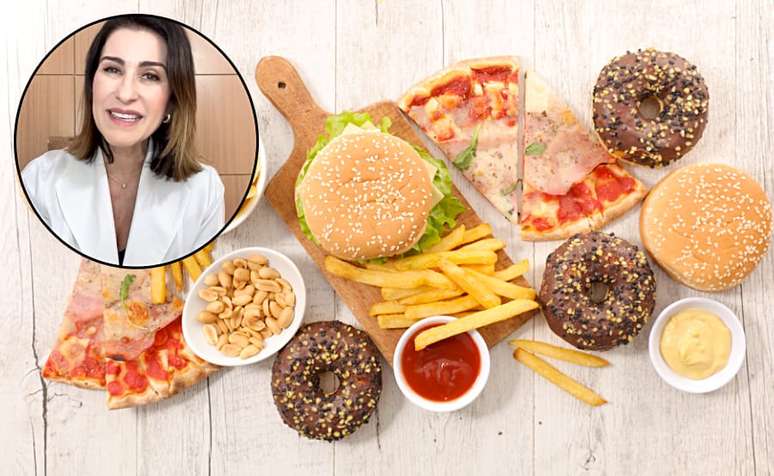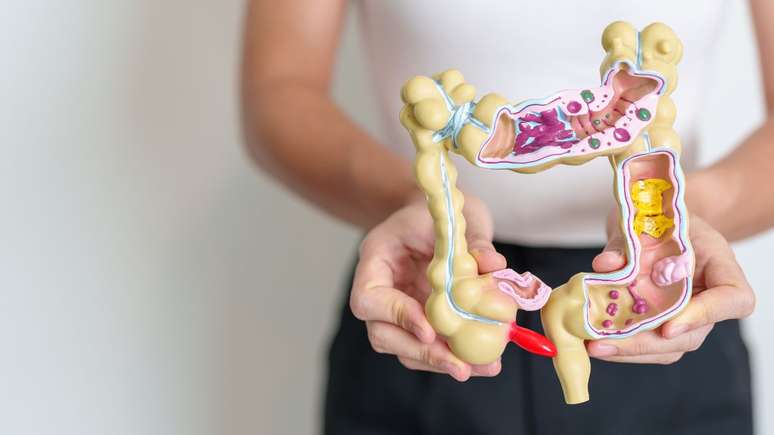The study points out that excessive consumption of ultra-processed foods is related to an increase in psychological distress and depression
-
ASSISTANCE

Ultra-processed foods increase the risk of depression
-
ASSISTANCE

Chest: 3 training mistakes that can hinder development
-
ASSISTANCE

Conjunctivitis or Covid-19? Know how to differentiate symptoms
-
ASSISTANCE

Morpheus: Kim Kardashian and Victoria Beckham’s skin secret
Although the consumption of ultra-processed and hyper-palatable foods – those that add fat, sodium, sugar and carbohydrates to make them tastier – can promote immediate pleasure, they are actually linked to depression and psychological distress, according to a recent study published in Journal of Affective Disorders.
“The study found that these foods, which also bring a greater caloric density, in addition to making diet lose control, since they can trigger neurobiological adaptations and lead to increasingly compulsive behaviors, are also associated with states of sadness,” explains the nutritionist. Marcella Garcezdirector and professor at the Brazilian Association of Nutrology (ABRAN).
The study showed that a potential risk factor for depression that can be changed is poor diet quality. There is a large gap in the diet of those who eat more ultra-processed foods.
“This type of eating pattern is associated with lower protein, fiber, and healthy fat intake, as well as reduced total fruit and vegetable intake,” says Marcella. “Both macronutrients (proteins, carbohydrates and fats) and micronutrients (vitamins and minerals) can have positive impacts on the mood of the people who consume them. While the absence of certain foods in the diet can contribute to making an individual depressed, the presence of others can increase stress, anxiety and depression.
How the study was done
In the study, 24,674 participants completed the dietary intake assessments and psychological distress questionnaire at the second follow-up. In addition, the researchers calculated the average daily consumption of ultra-processed foods in terms of energy and weight by converting the consumption frequencies reported in grams using gender-specific portions of food and multiplying by the daily frequency.
The Kessler Psychological Distress Scale (K10) was used to measure psychological distress during follow-up. The K10 assesses overall psychological distress, with high K10 scores indicating the presence of typical mental illness.
“A total of 13,876 women and 9,423 men were included in the final analysis. Individuals who consumed the most ultra-processed foods were more likely to live alone. These individuals were also less likely to report higher education, be married, or be in an ongoing relationship. They were also less likely to engage in high levels of physical activity.”
“Individuals who belonged to the group that had the highest consumption of energy-corrected ultra-processed foods were 1.14 times more likely to have high psychological distress than those who consumed the least,” explains the nutritionist.
Balanced diet first of all
The doctor, who recommends a balanced, varied and as natural as possible diet, points out that this association has only been observed in individuals who have consumed a significant amount of ultra-processed foods. “These foods shouldn’t be banned completely, but ideally their consumption should be kept to a minimum,” says the nutritionist.
html[data-range=”xlarge”] figure image img.img-e7066cc8dd694f32800cc5d39c64152cwmbmdpyc { width: 774px; height: 476px; }HTML[data-range=”large”] figure image img.img-e7066cc8dd694f32800cc5d39c64152cwmbmdpyc { width: 548px; height: 337px; }HTML[data-range=”small”] figure figure img.img-e7066cc8dd694f32800cc5d39c64152cwmbmdpyc, html[data-range=”medium”] figure image img.img-e7066cc8dd694f32800cc5d39c64152cwmbmdpyc { width: 564px; height: 347px; }HTML[data-range=”small”] .article__image-embed, html[data-range=”medium”] .article__image-embed { width: 564px; margin: auto 0 30px; }

Finally, the doctor recalls that the neurotransmitters linked to well-being and good mood are formed by various nutrients, but the main substrates are amino acids, present in proteins of vegetable origin, found in legumes (cereals that give in pods such as beans, peas, lentils, chickpeas, soybeans and peanuts), in cereals and seeds and in those of animal origin, such as meat in general, eggs and dairy products.
“Tryptophan, an essential amino acid for the synthesis of serotonin, the main neurotransmitter linked to mood and well-being, is present in many foods, both plant and animal, including: bananas, fish, dairy products, chickpeas, chicken meat, chocolate, eggs, peanuts, avocados, cashews and almonds. Therefore, the ideal is always to maintain a balanced, varied and as natural food habit as possible, for the correct synthesis of neurotransmitters and the maintenance of organic functions, which have a positive effect on mood and well-being”, concludes the nutritionist.
HOMEWORK inspires transformation in the world of work, in business, in society. Created by Compasso, a content and connection agency.
Source: Terra
Ben Stock is a lifestyle journalist and author at Gossipify. He writes about topics such as health, wellness, travel, food and home decor. He provides practical advice and inspiration to improve well-being, keeps readers up to date with latest lifestyle news and trends, known for his engaging writing style, in-depth analysis and unique perspectives.







-qhl2q32de4ok.jpg)
